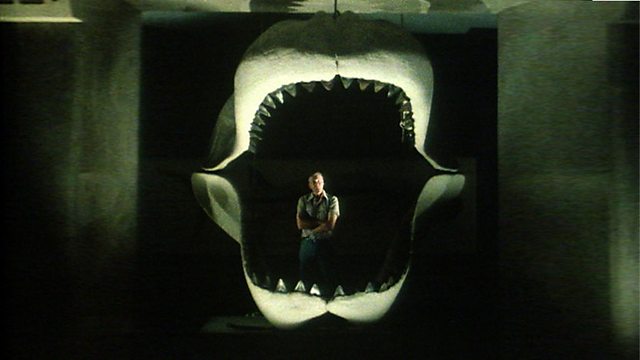
The toothy jaws that led to the rise of the shark
Jaws were significant in the evolution of fish. They become very effective food gatherers, some growing into very large creatures indeed, such as the primitive shark.
David Attenborough is walking on an ancient seabed that was once about 200 feet below sea level, but is now part of the parched Australian outback.
The sediments that lay at the bottom of that sea are now the sandstones beneath his feet, and in these are the remains of the creatures that lived in those seas.
One fossil he finds is the scale of a huge fish, another is the flank of a smaller fish with many scales on it, and a third is the fossilised skull of a lungfish.
All these creatures, 400 millions years old, were considerably advanced compared to the lancelet and the lampreys because they had true jaws and some of their scales had turned into teeth.
These toothy jaws enabled the fish to become very effective food gatherers and some grew into very large creatures indeed, such as the primitive shark that was about 45 feet long.
Although that shark is now extinct, its relatives are very much alive. Modern sharks have sensitive nostrils with which they can detect prey from great distances.
Hammerhead sharks are said to be especially sensitive, with a nostril at each side of the hammer. By swinging the head from side to side it can detect where the scent is strongest.
In sharks, the rod in the back of fish such as lancelets has been strengthened with cartilage, and the entire skeleton is now built from this soft, light material.
However, they still swim like lancelets with sideways beats of the rear body and tail.
As the thrust this creates drives the nose down, they have a pair of horizontal fins at the front to compensate.
But the fins are stiff and inflexible so can't be used to slow them down. Indeed, a charging shark can't stop, but only swerve to one side.
Nor can it swim backwards. And since its body is heavier than water, if it stopped swimming, it would sink.
Duration:
This clip is from
Featured in...
![]()
±«Óãtv Nature
Be captivated, informed and inspired by the world's wildlife.
More clips from Life on Earth
-
![]()
Lucky pups—The Rise of the Mammals
Duration: 03:29
-
![]()
Millennia of millipedes—The First Forests
Duration: 01:50
-
![]()
Creatures of the night—Life in the Trees
Duration: 01:16
-
![]()
Scent sense—Life in the Trees
Duration: 02:55






